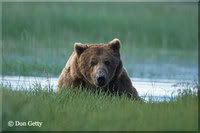Question for ya
Anyhow ... today's question is directly related to the possible (fingers crossed) onset of Spring.
Near where Miss Behaviour and I live in Berlin, there are a number of lakes. Two of these lakes are the two Wannsees, a large one and a small one, imaginatively named Großer Wannsee and Kleiner Wannsee, respectively. You can see them both clearly in this image from Wikipedia.

Yesterday, I went for a walk along to the two Wannsees and discovered that while the smaller of the two has completely thawed from its previous frozen state, the Großer Wannsee is still almost completely frozen over. Thus, whereas this sculler can already train freely on the Kleiner Wannsee ...
... this tour boat is still frozen in, barely 100m away as the crow flies.
The ice of the Großer Wannsee gives way to the open water of the Kleiner Wannsee just before the bridge under which the two lakes join. As a result, whereas the gull in the background is standing on the ice, the ducks in the foreground are paddling in the water.
In the fading light as dusk approaches, the two lakes look like this:
Kleiner Wannsee, completely thawed

Großer Wannsee, still almost completely frozen over
Großer Wannsee, still almost completely frozen over
Which brings me, finally, to my question for ya: why is that? How can that be? The lakes are joined together; they are located right alongside each other; the weather affecting one is the same as the weather affecting the other. So why the significant difference in thaw speeds? And why does the smaller lake thaw first?
If anyone with a clearer understanding of physics and meteorology than I (not hard) can shed some light on that for me, I should be most appreciative.
If anyone with a clearer understanding of physics and meteorology than I (not hard) can shed some light on that for me, I should be most appreciative.
Tags:
queries; ice; weather; Berlin; Wannsee

<< Home